|
|
|
|
Products mentioned in this Article
--None--
|
|
|
|
|
|
|
|
|
 |
|
|
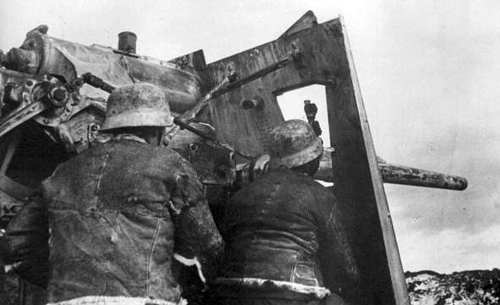 |
A Brief History of the “88”
The Most Famous Gun of World War Two
by Blake Coster
During the latter days of 1941, as the German Reich was reaching its apex, it was believed the Wehrmacht had in its possession a secret weapon that was able to knock-out any Allied tank at ranges far beyond those at which they were able to fight back.
|
While the Allies were left scratching their heads as to what was causing
such chaos, the Germans knew the tormentor of the Allied armoured
formations as the 8.8cm family of FlaK and Anti-tank guns.
The
88 (as it was known by the Allies) was originally designed as an anti-aircraft gun, with its roots tracing back to the First World War. An 8.8cm FlaK gun was
required to defend the areas around the Ruhr and Rhine, which were susceptible to Allied air
raids. Once Hitler came to power and had thrown off the shackles imposed by the
Treaty of Versailles on Germany’s weapons development, engineers began drafting
an updated version of the 8.8cm anti-aircraft gun. |
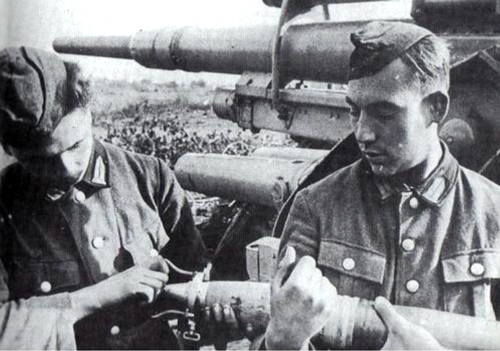 |
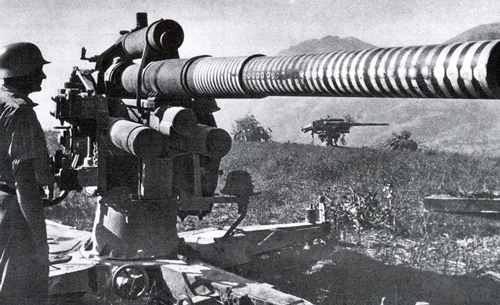 |
The first version of the new gun went into production and entered service as the 8.8cm FlaK18 (Flugabwehrkanone 18) during 1933. Despite the 8.8cm FlaK18 being an instant success, the German engineers believed the design could be improved on. Accepted for service in 1937, the 8.8cm FlaK36 featured an improved three-section barrel known as the Rohr Aufbau 9 (RA 9). This new design, in addition to the introduction of new propellants and improvements in ammunition design, increased the life of the barrel from the 900 rounds experienced by the 8.8cm FlaK18 to the 6000 rounds (sometimes as high as 10,000 rounds) of the 8.8cm FlaK36.
|
The barrels of the 8.8cm FlaK18 and 36 were both 56 calibres in length (56 x the 8.8cm calibre of the gun) i.e. 4.93 metres. The resulting barrel length created a muzzle velocity of 820m/s which gave the gun a maximum vertical range of nearly 15,000 metres. The breech could be operated either manually or automatically with the spent casing being ejected automatically, once the breech opened. The gun also enjoyed a 360° traverse and elevated as high as 85°. A trained crew could achieve a rate of fire up to 15 rounds a minute.
|
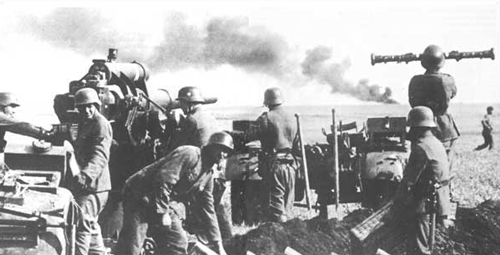 |
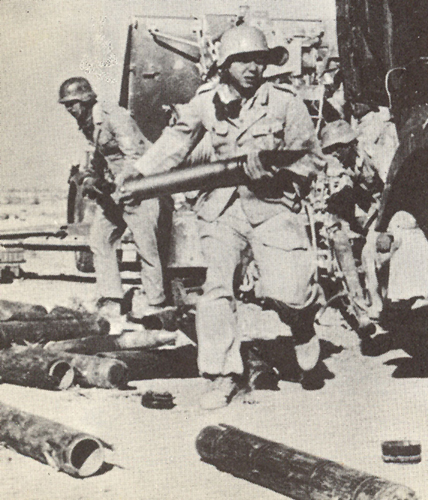 |
The
8.8cm FlaK18 first saw action during the Spanish Civil war, used as a
test ground for many of the weapons that saw service during World War Two. It
was during this conflict that the potential was first discovered to utilise the
weapon as an anti-tank gun, however these opinions were quickly dismissed due
to the abnormal nature of the conflict. i.e harsh terrain, inexperienced crew
etc.
By the outbreak of the Second World War there
were three versions of the 8.8cm FlaK gun in German service, the FlaK18, FlaK36 and FlaK37. Its true potential as an anti-tank weapon was
not unlocked until the campaign in North Africa, but a small taste of what was in store for the Allies came in France during 1940.
While the 3.7cm PaK36
was more than capable of dealing with any of the lightly armoured
Polish tanks such as the TKS or 7TP, when the 1st Army Tank Brigade of the British
Expeditionary Force (BEF) armed with Matilda I and II tanks overran the
German position at Arras, the 3.7cm PaK 36 anti-tank guns proved ineffective.
|
The Germans quickly fell back to a position occupied by 7. Panzerdivision commanded by Majorgeneral Rommel. Taking charge of the situation, Rommel quickly ordered the formation of a firing line with whatever guns were on hand. These included the 88s of the 23. FlaK Regiment. The effect of the fire, especially from the 88s, was devastating, knocking out numerous Matildas and halting the British attack.
|
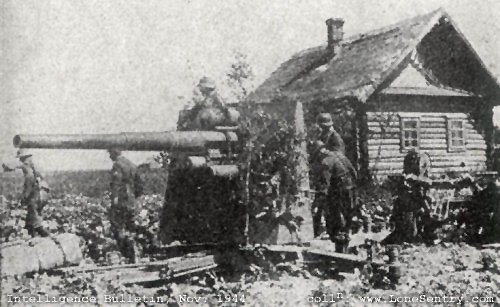 |
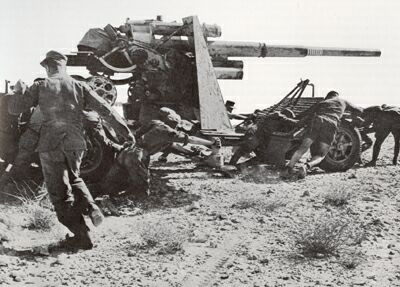 |
Rommel continued to use the 88 to great effect after arriving in North Africa; coming to the aid of the beleaguered Italian Army that had been swept out of Libya by British and Commonwealth forces. After some early successes against the British, Rommel set up defensive positions at Sollum and Halfaya, pinning his hope on the effectiveness of the 88 in an anti-tank role. He wrote in his diary on 26 May 1941:
“In constructing our positions at Halfaya and on Hill 208 great skill was shown in building in batteries of 88mm guns for anti-tank work, so that with the barrels horizontal there was practically nothing to be seen above ground. I had great hopes of the effectiveness of this arrangement.”
|
When the British countered with Operation Battleaxe, their push towards the positions at Sollum and Halfaya lacked any finesse. With the British armour advancing directly towards the prepared positions, the 88s extracted a heavy total. With somewhere between 170-250 tanks taking part in the battle, by the end of the first day the British had lost over half their strength; many to carefully positioned 88s.
With the appearance of the Soviet T-34 and KV-1 tanks during Operation
Barbarossa, the German experienced déjà vu from the campaign in France;
as once more the anti-tank guns such as the 5cm PaK38 were unable to
penetrate the armour of the latest Soviet tank designs. The 88 was once more
called upon to deal with this new threat. However, while the ballistic
performance of the 88 made it outstanding as an anti-tank gun, it was still
principally designed as an anti-aircraft gun and suffered from several
flaws when engaging ground targets. The first of these was the height of the gun; it was difficult to
conceal without a great deal of effort digging the gun in and, despite
the addition of a gun shield, the crew was still susceptible to small
arms fire and air bursting artillery shells. Loading the gun was
physically demanding as was the limited handling that could be performed
by the crew. Sighting the gun was also difficult when engaging ground targets.
Right: Loading an "88" anti-aircraft gun.
|
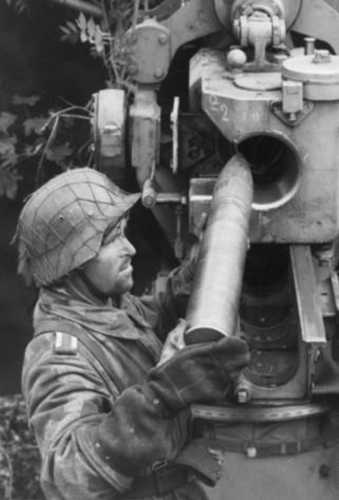 |
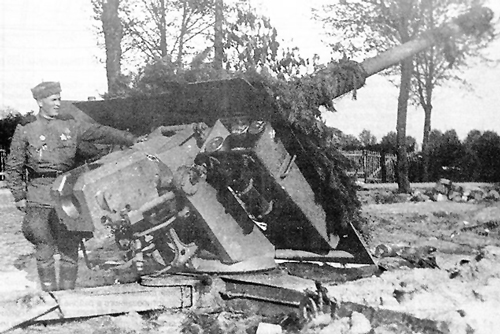 |
The next logical step was to develop of a dedicated version of the 88 for use strictly as an anti-tank gun. Krupp responded with the 8.8cm PaK43; the weapon would prove to be a runaway success and featured a 71-calibre barrel mounted on a cruciform platform that provided a 360° field of fire. A modified version of the ammunition developed for the FlaK41 provided enough firepower to destroy any tank the Westerns Allies or Soviets could field. Featuring a low profile and a streamlined gunshield, the PaK43 was far more suited to role of an anti-tank than any of the FlaK series of 88s. However, getting the gun in the hands of the hard-pressed troops in the frontlines was not without its difficulties.
Left: The 8.8cm PaK43.
|
Allied bombing had virtually destroyed the carriage producing facilities for the PaK43 and Krupp was
forced to improvise given the pressure placed on them to get the gun into the field. While the gun itself was the same, the carriage was pieced together from
various artillery carriages already in service with the German Army. The
8.8cm PaK43/41 as it was known proved unpopular with its crew; it was
heavy and unbalanced which made moving the gun difficult. Though only a
stopgap measure, ballistically the gun enjoyed the same performance as
the PaK43. Despite these difficulties, as many as 2000 8.8cm PaK43 saw
action by the end of the war.
|
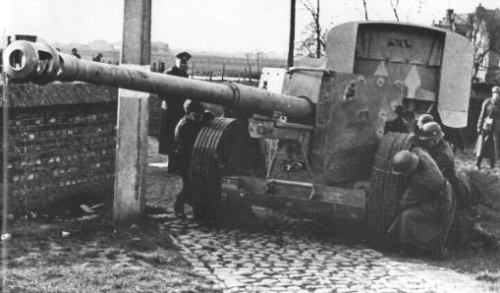 |
| Not long after its introduction, the decision was made to create a
self-propelled version of the PaK43. This was not the first time the 88
was made mobile; during 1938 the 8.8cm FlaK18 was mounted on the back of
the Sd Kfz 8 schwerer Zugkrafwagen 12t. The resulting vehicle known as
the 8.8cm FlaK Sfl, saw action during the campaign in France and the
early stages of Operation Barbarossa. The intention behind self-propelled anti-tank guns was to stalk and
ambush enemy tanks before beating a hasty retreat, rather than getting
into a stand-up fight. With this in mind, the first vehicle developed was the lightly armoured Nashorn
(later renamed the Hornisse). Based on the Panzer IV chassis the Nashorn was
regarded as an interim solution, but still saw extensive service; relying on its long range firepower to eliminate any potential threats before they were within range to fight back. |
| Below: The 8.8cm FlaK Sfl. |
Below: The Nashorn or Hornisse.
|
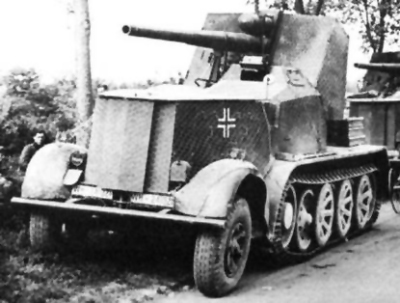 |
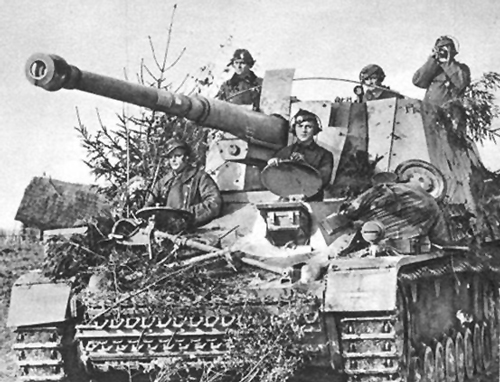 |
| Next
off the drawing board was the Ferdinand, which proved a failure due to
its limited mobility (mainly due to the weight of the vehicle) and lack of a self-defence machine-gun. These short-comings
were exploited by Soviet tank hunting infantry at the battle of Kursk
and the surviving vehicles were withdrawn from service and refitted before
being deployed to Italy. The most successful of the self-propelled 88s
was the Jagdpanther. Based on the Panther chassis, the vehicle featured a
spacious fighting compartment, sloped armour and was highly mobile. It
proved popular with its crews, but with only 425 produced; this
outstanding design couldn’t influence the final outcome of the war. |
Below: The Ferdinand.
|
Below: The Jagdpanther. |
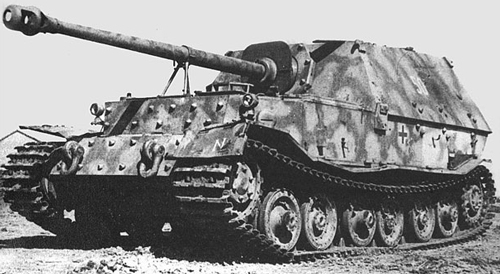 |
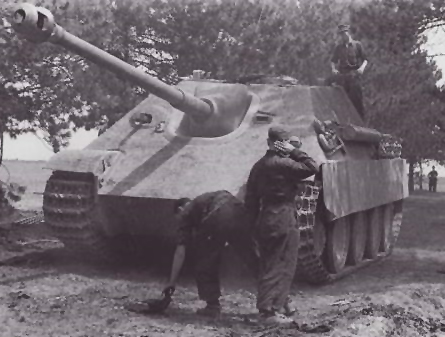 |
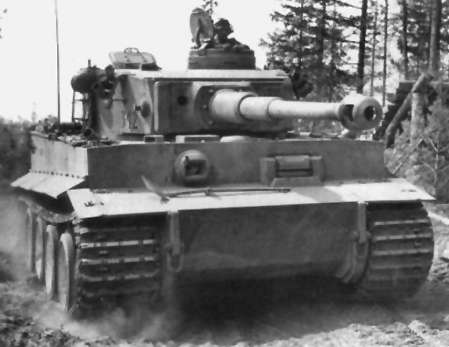 |
No article on the 88 would be complete without making mention of the tank-mounted versions of the 88. The first and only vehicle to mount the 8.8cm KwK36 was the Tiger I E. The 8.8cm KwK36 featured a vertical sliding breech block, a different recoil mechanism and a double-baffle muzzle brake when compared to the FlaK36. While the barrel was still 56 calibre in length, it was made up of a single piece contained in a thin jacket and fired the same ammunition as the FlaK18/36/37 series of guns. In the hands of experienced tank aces such as Michael Wittmann, the
Tiger helped to reinforce the legendary status of the 88 during the Second World War.
Left: The Tiger I E armed with the 8.8cm KwK36.
|
But the Germans weren’t done yet. The 8.8cm KwK43 that was mounted in the King
Tiger was developed in conjunction of the PaK43 and shared its
outstanding level of performance. The King Tiger was a formidable
opponent on the battlefield, but was severely impaired by its lack of
mobility, mechanical deficiencies, drain on resources during
manufacture, and massive fuel consumption.
Right: The King Tiger armed with the 8.8cm KwK43.
|
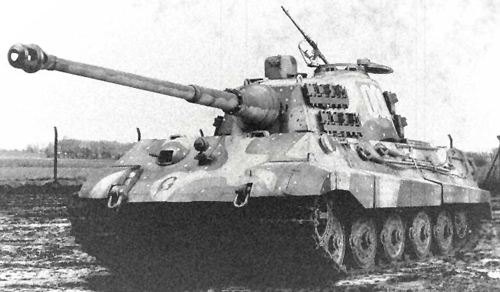 |
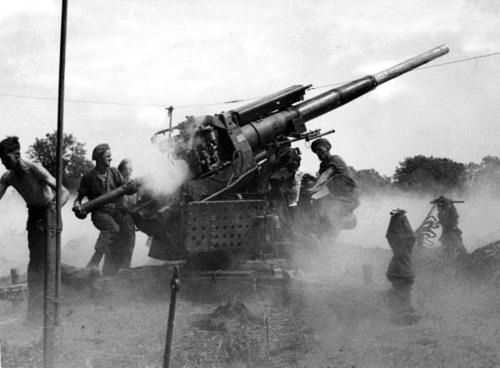 |
While the Allies developed guns of similar calibre, for example, the
British OQF 3.7” and the American M1 90mm Anti-aircraft guns, none of them enjoyed the legendary
status of the German 88. The 88 definitely deserves its place in
military history as one of the most successful guns of its type.
~ Blake.
Left: The British OQF 3.7" Anti-aircraft gun in action.
|
Last Updated On Wednesday, October 26, 2011 by Blake at Battlefront
|
|
|